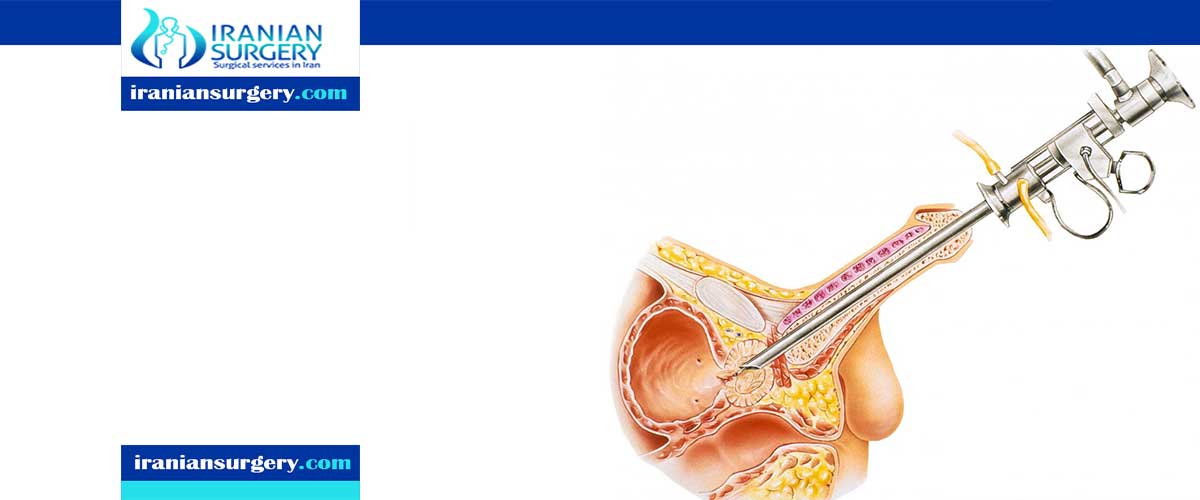transurethral resection of the prostate (turp) the gold standard

transurethral resection of the prostate (turp) the gold standard
Transurethral resection of the prostate (TURP) to treat benign prostatic hyperplasia has been the gold standard for decades. ... Thus, B-TURP is the next generation "gold standard" for benign prostatic obstruction (BPO) because it is associated with a lower rate of clinically relevant complications
TURP is still the gold standard even now for small to moderate sized prostate glands which comprise the vast majority of cases in any urology practice.
10 common questions about transurethral resection of the prostate
1Can the prostate grow back after a TURP?
Approximately 75% of patients experience this after TURP. Regrowth of the prostate. Although we remove a lot of the prostate, the prostate gland can grow back again, causing the original problem to return (usually after five to ten years). If this happens, you may need to have another operation
2Is TURP a major surgery?
The most common surgery for BPH is called transurethral resection of the prostate or TURP. During the procedure, surgeons remove the excess prostate tissue through the urethra. ... A doctor who specializes in the urinary tract does most TURP surgeries. TURP is considered a fairly safe, effective procedure for treating BPH.
3How long do you stay in hospital for a TURP?
You'll usually need to stay in hospital for 1 to 3 days after your operation. The catheter used during the operation will be left in place while you're in hospital because your urethra will be swollen and you may not be able to urinate normally at first
4How painful is TURP surgery?
Transurethral resection of the prostate (TURP) is surgery to remove prostate tissue. It is done when an overgrown prostate gland is pressing on the urethra and making it hard for a man to urinate. ... Your urine may be pink for 1 to 3 weeks after surgery. You also may have bladder cramps, or spasms
5Is HoLEP better than TURP?
HoLEP and TURP
TURP is the historical gold standard to which all surgical modalities for BPH are compared. ... However, Ahyai [22] also found that the mean tissue resection rate (g/min) for HoLEP and TURP was statistically similar (0.52 g/min vs 0.57 g/min), making them equally time-efficient procedures.
6Is there an alternative to TURP?
There are a number of alternatives to TURP that can be just as effective with a lower risk of complications. They include: holmium laser enucleation of the prostate (HoLEP) – a laser attached to a resectoscope is used to cut away excess prostate tissue
7Does PSA go down after TURP?
Results: Clinical improvement after TURP, reflected by I-PSS score, was demonstrated as early as 30 days and remained stable until the end of the follow-up. Mean t-PSA declined 71% after TURP and 60 days after surgery the reduction reached its peak, stabilizing afterwards.
8Can I take Viagra after TURP surgery?
A new study, however, shows that Viagra (sildenafil), the popular medication for erectile dysfunction, can restore impotency lost in surgery. Whether men respond, however, depends on how much nerve damage occurred during surgery. ... All were prescribed Viagra following prostate removal surgery
9How many years does a TURP last?
During the surgery, the surgeon uses the wire loop to remove the tissue one piece at a time. The pieces are carried by the fluid into the bladder and then flushed out at the end of the operation. The surgery lasts about 90 minutes.
10How successful is TURP?
How effective is TURP and what consequences can it have? Studies have shown that TURP can permanently reduce prostate-related problems. Nine months after having TURP, about 75 out of 100 men only have mild symptoms. For example, at night they only need to get up to go to the bathroom once, or not at all.
[kkstarratings]


